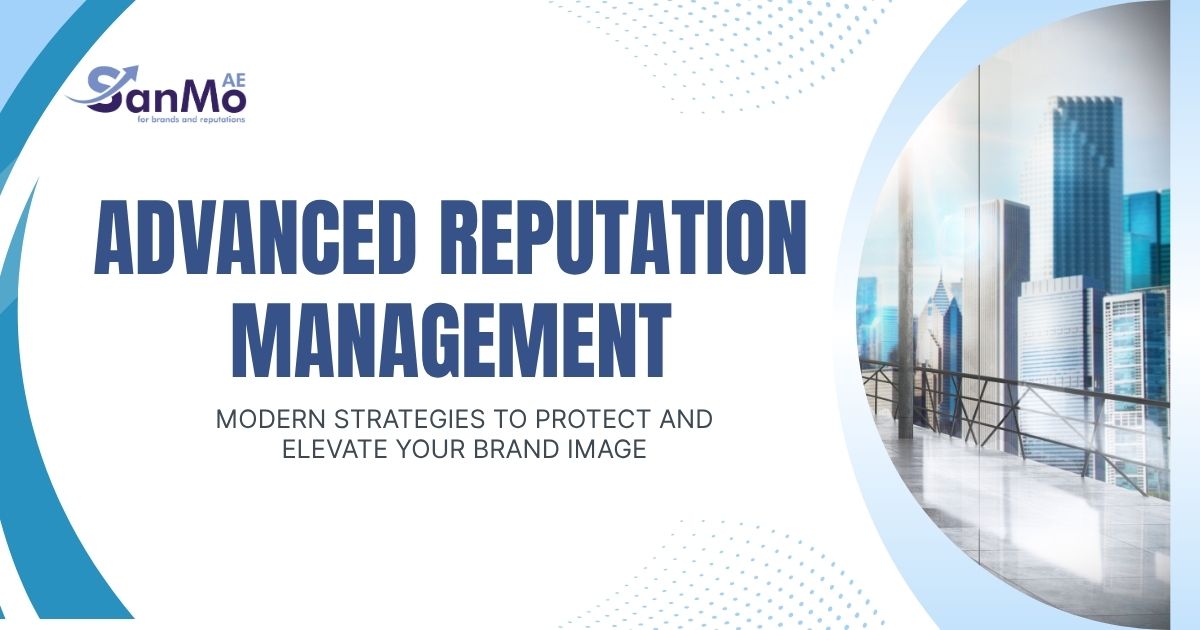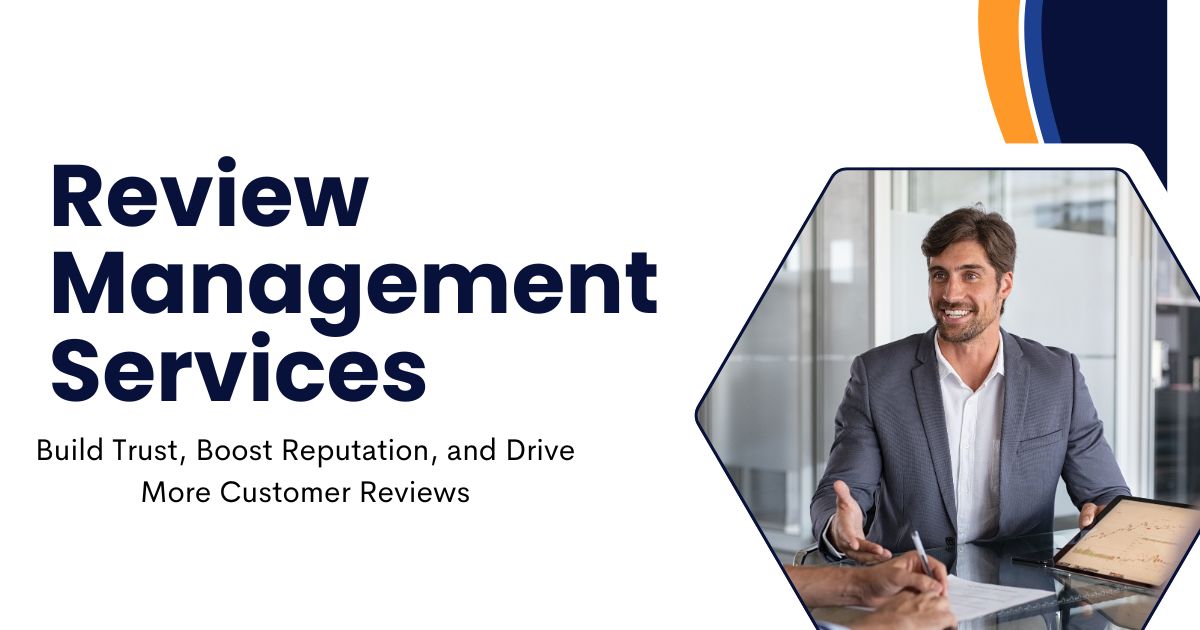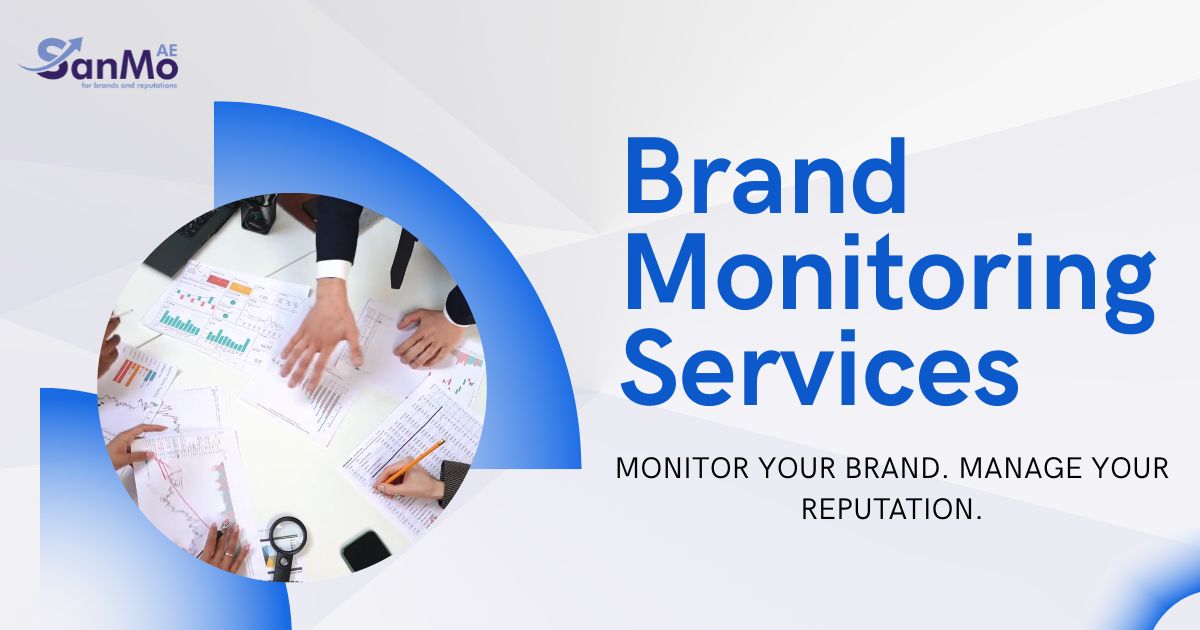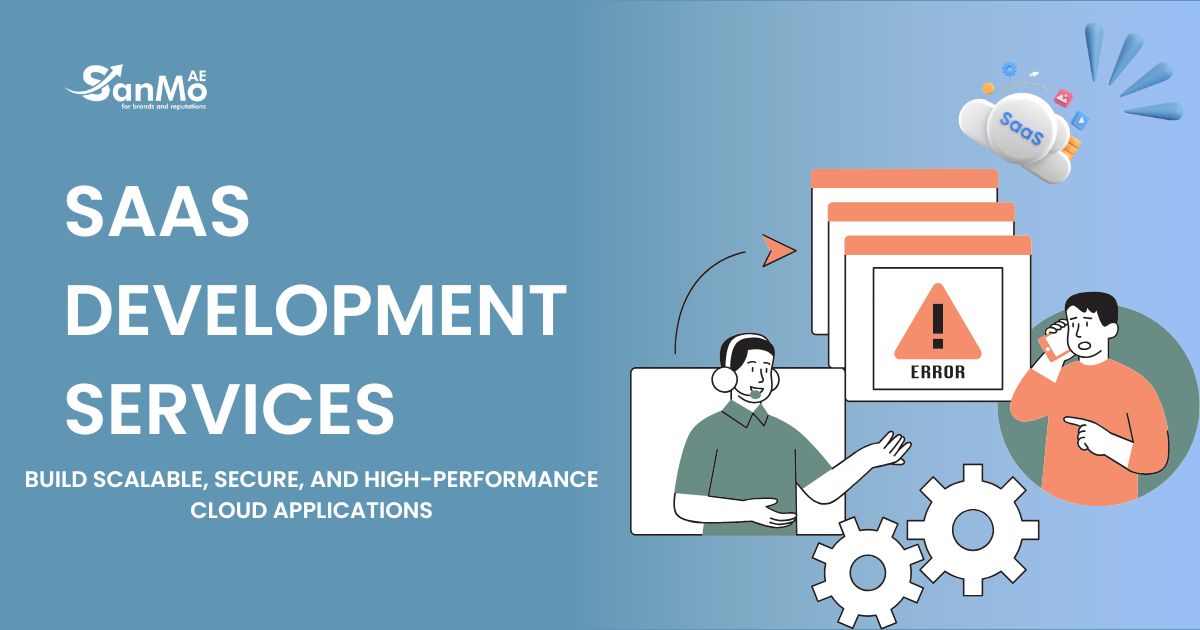In today’s hyperconnected world, reputation is everything. Before a customer clicks “buy,” applies for a job, or signs a partnership deal, they almost always do one thing — search online. What they find can make or break your brand.
Your digital reputation is no longer just a reflection of what you say about your company; it’s shaped by what others say about you — across social media, news outlets, review platforms, and search engines.
That’s why advanced reputation management has become a critical pillar of modern brand strategy. It goes beyond responding to bad reviews or managing PR crises — it’s about building trust proactively, monitoring brand perception in real time, and using data-driven insights to guide every communication.
At SanMo AE, we believe that a brand’s reputation is its most valuable digital asset — one that must be managed strategically, analytically, and authentically.
The Evolution of Online Reputation Management
The early days of online reputation management (ORM) were simple: respond to negative reviews, bury bad news, and push positive content.
But the digital landscape has evolved drastically.
Social platforms, real-time news cycles, and the rise of influencer-driven narratives have made brand perception faster, more complex, and more public than ever. Now, a single viral post can shift public sentiment overnight. A CEO’s comment on X (formerly Twitter) or a customer video on TikTok can spark global conversations in hours.
This shift has redefined ORM into Advanced Reputation Management (ARM) — an integrated, forward-thinking approach that combines:
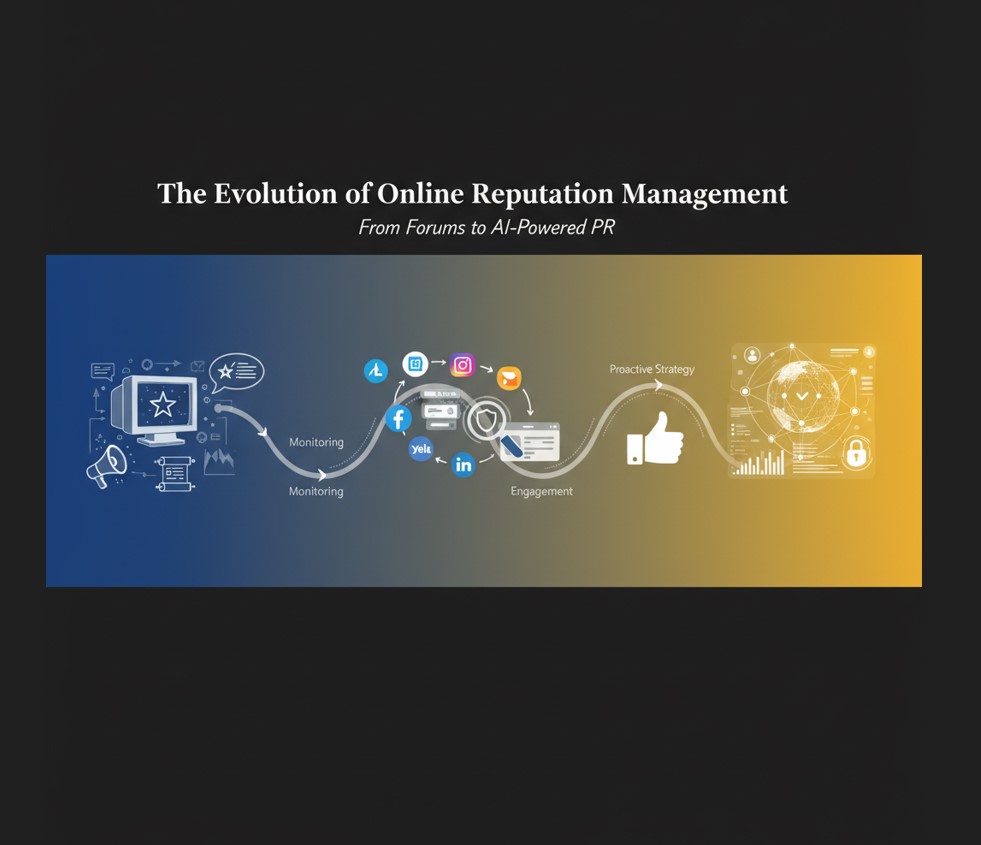
-
Continuous monitoring of online sentiment
-
Crisis prediction and mitigation
-
Strategic storytelling and PR alignment
-
AI and data analytics for brand intelligence
-
Cross-channel reputation synchronization
In essence, it’s not just about damage control anymore. It’s about shaping perception with precision.
Key Components of Advanced Reputation Management
Modern reputation management rests on a mix of technology, strategy, and human understanding. Below are the essential pillars that define a truly advanced reputation framework.
1. Continuous Brand Monitoring
Today’s brands operate in real time — and so should their reputation strategies. Continuous monitoring involves tracking mentions, hashtags, keywords, and public conversations related to your brand or leadership.
Advanced tools like Brandwatch, Mention, and Sprinklr can detect subtle changes in sentiment and highlight emerging risks before they escalate.
SanMo AE leverages similar technologies to provide clients with live reputation dashboards, allowing brands to stay ahead of online conversations.
2. Data-Driven Insights
Reputation is emotional, but managing it requires precision. Data analytics helps identify patterns behind public perception, such as:
-
Which channels drive the most brand sentiment?
-
What topics trigger positive or negative engagement?
-
How do customer emotions correlate with product experiences?
These insights empower brands to make informed decisions — whether it’s fine-tuning messaging, launching new campaigns, or addressing internal issues that might impact public trust.
3. Online Review and Feedback Management
Customer reviews are the modern-day “word of mouth.” A brand’s credibility often depends on platforms like Google, Yelp, and Trustpilot.
An advanced approach involves:
-
Centralizing review monitoring
-
Automating feedback responses
-
Encouraging authentic customer testimonials
SanMo AE helps businesses integrate these review ecosystems into their CRM, ensuring real-time alerts, fast response systems, and data-backed sentiment tracking that improves overall brand reliability.
4. Proactive Public Relations and Storytelling
Reputation isn’t just about defense; it’s about strategic offense.
Through proactive PR and brand storytelling, companies can control their narrative and highlight achievements before others define them.
From thought leadership articles and podcasts to strategic press releases, advanced PR builds emotional and intellectual trust. It also positions the brand as an authority in its field — reducing vulnerability to negative press.
5. Crisis Prevention Frameworks
Crisis management isn’t about reacting fast; it’s about being prepared before the storm hits.
An advanced reputation strategy includes predefined frameworks:
-
Early warning systems
-
Response templates
-
Stakeholder communication maps
-
Social listening triggers
SanMo AE helps organizations develop crisis playbooks that enable leadership teams to act decisively, maintain transparency, and preserve public confidence during challenging moments.
Data and AI in Monitoring Brand Sentiment
Artificial intelligence has redefined the speed and accuracy of reputation management. With AI-driven sentiment analysis, brands can now:
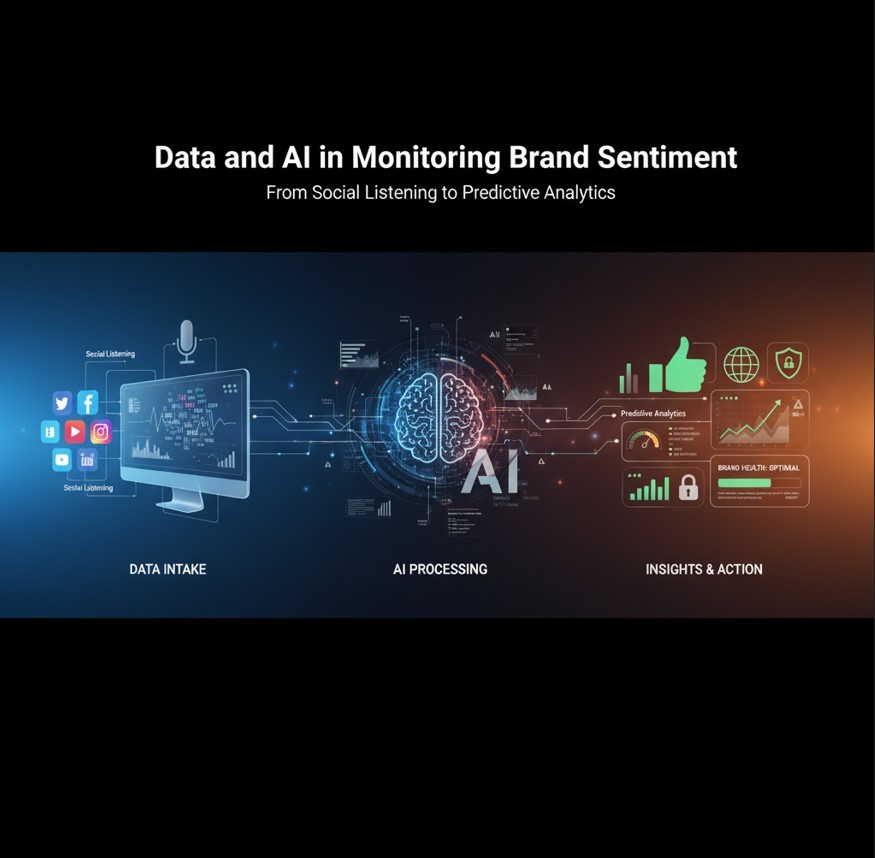
-
Detect tone, emotion, and intensity behind public comments.
-
Segment audiences based on trust, loyalty, or skepticism.
-
Forecast potential crises using historical trend patterns.
For example, AI tools like Talkwalker and Meltwater use natural language processing (NLP) to understand context beyond words. They can differentiate between sarcasm, frustration, and genuine praise — offering a far more nuanced understanding of audience sentiment.
At SanMo AE, we integrate AI tools with human expertise to ensure insights are not just accurate but actionable. Machines can measure tone, but humans interpret meaning — and that’s where the real power of advanced reputation management lies.
Case Studies: Successful Reputation Turnarounds
Case 1: The Airline That Turned Criticism into Loyalty
An international airline once faced backlash after a viral customer service incident. Instead of issuing generic apologies, the brand used AI-powered sentiment mapping to identify key frustration points — delayed responses and lack of empathy.
They then retrained staff, launched a transparency campaign, and created a “Real-Time Care” social team.
Result? Within six months, their brand sentiment score improved by 42%, and customer trust began to recover.
Case 2: The Tech Startup’s Proactive Strategy
A SaaS startup noticed early chatter about security concerns — before it made headlines. Using continuous brand monitoring, they detected the issue, issued clarifications with transparent updates, and leveraged influencers to rebuild confidence.
By addressing the issue before it escalated, the company avoided a PR storm and even strengthened its credibility.
These examples show one core truth: brands that listen, act, and communicate transparently are the ones that thrive long-term.
SanMo AE’s Approach to Reputation Excellence
At SanMo AE, we understand that reputation is both quantitative and emotional. It’s about metrics — but also about meaning.
Our advanced reputation management framework integrates technology, analytics, and communication strategy to deliver end-to-end protection and growth.
1. Comprehensive Brand Intelligence
We use advanced digital tools to monitor every mention, keyword, and trend connected to your brand. This ensures that you always have a 360-degree view of your online presence.
2. Strategic Communication Alignment
Our team aligns your marketing, PR, and communication strategies to maintain a unified voice across all channels — from LinkedIn to press coverage to customer interactions.
3. Data-Driven Crisis Prevention
SanMo AE’s data systems identify early warning signs of potential brand threats, enabling quick, well-informed responses before minor issues become major crises.
4. Sentiment and Trust Analytics
We go beyond vanity metrics. Our reports include emotion-based analytics that show how people feel about your brand — not just what they say.
5. Long-Term Reputation Recovery
For brands that have faced reputational setbacks, SanMo AE designs reputation recovery roadmaps — from SEO-driven content rebuilding to influencer collaboration and transparent PR campaigns.
Our goal isn’t just to fix your reputation — it’s to future-proof it.
Best Practices and Future Outlook
The world of reputation management is evolving rapidly, and businesses that adapt will stay ahead. Here are some best practices every brand should implement in 2025 and beyond:
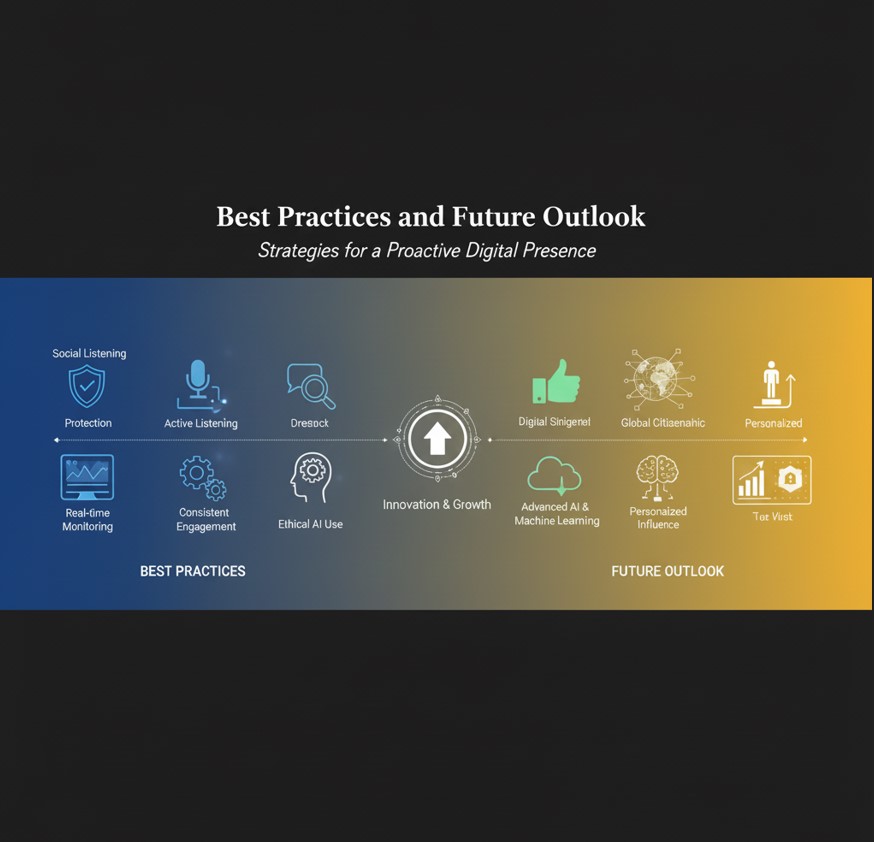
-
Listen before you speak.
Use social listening tools to understand audience mood before crafting responses. -
Be transparent — always.
Audiences reward honesty, even when the news isn’t ideal. Authenticity builds long-term trust. -
Humanize your brand.
Share stories, values, and people behind your company. Emotional connection drives loyalty more than corporate polish. -
Leverage employee advocacy.
Your team can be your strongest reputation ambassadors. Encourage them to share positive experiences and brand wins online. -
Integrate AI with empathy.
Use data and technology for speed, but never forget the human element that defines genuine relationships. -
Measure reputation ROI.
Track sentiment scores, media reach, engagement quality, and customer retention to evaluate the impact of your reputation strategy.
Looking forward, AI, automation, and predictive analytics will continue to shape the reputation management landscape. But even as tools evolve, the essence remains human — trust, transparency, and authenticity will always be the foundation of brand credibility.
Conclusion: Protecting Trust in a Transparent World
Reputation management has evolved from a reactive PR function into a strategic business imperative. In an age where every tweet, comment, or customer review can influence perception, brands must approach reputation with the same precision as finance or operations.
Advanced reputation management isn’t just about handling what people say — it’s about shaping the story, guiding sentiment, and turning every interaction into an opportunity for trust.
At SanMo AE, we partner with organizations to protect and enhance what truly matters — their credibility. Through data-driven insights, AI-powered monitoring, and strategic storytelling, we help brands navigate complexity with confidence.
Because in the end, reputation isn’t just what people think of you — it’s the foundation of every relationship your brand will ever build.

